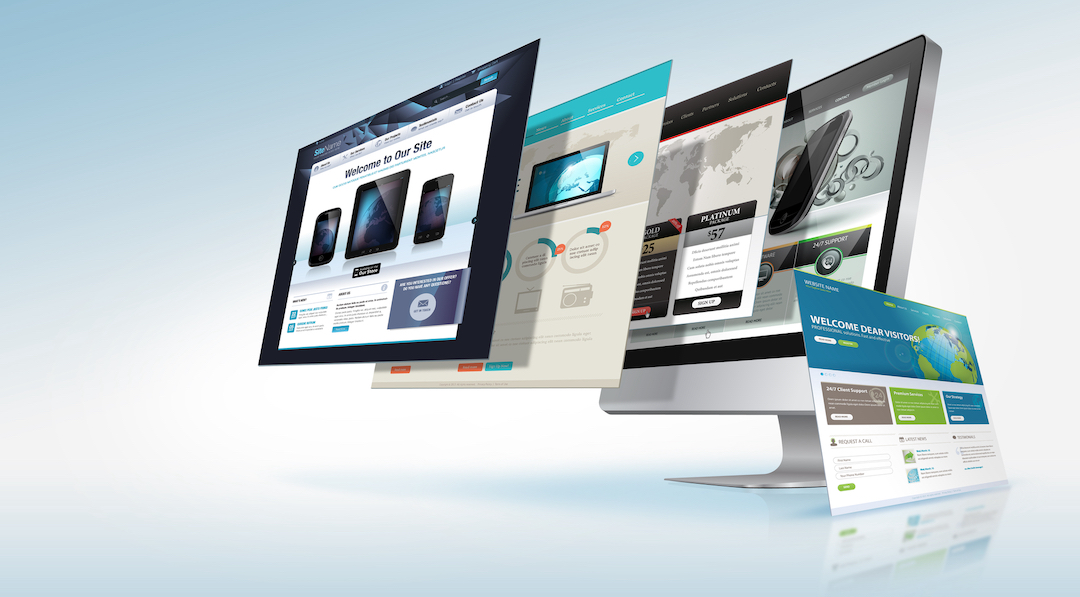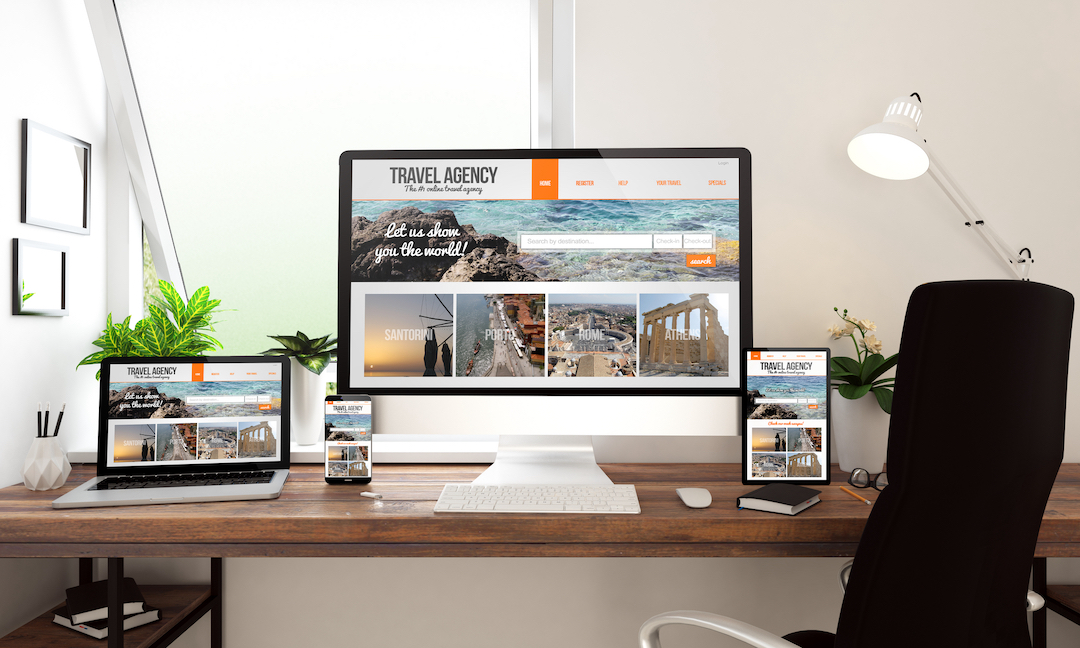
In this article, I will answer one of the most common questions I get asked by my clients, how long does it take to build a website?
If you’re launching a new product, starting a business, rebranding, or simply looking to upgrade your online presence, you’re most likely on the market for a new website. So how long will it be before you can get your new website launched?
The time it takes to build a website will vary depending on six factors that I cover later on in this article, but here’s the excellent news:
Long gone are the days where it takes a team of experienced designers and programmers several months to design and build a website. It’s just not that complicated anymore.

In 2023, building a website can be done in weeks, not months.
Don’t get me wrong, it still takes experience, but thanks to modern website platforms, it is possible to design and build a new website within a matter of weeks, and it doesn’t take a college degree in computer programming.
Over the past ten years, I’ve built thousands of websites for companies of all sizes and from various industries. I’ve used several website platforms, the most popular one being WordPress.
I’ve built one-page websites and landing pages, I’ve built websites for small businesses and startups, and I’ve made massive corporate websites with hundreds of pages. I’ve also built highly customized websites, where I researched and proposed custom designs and custom-coded special functions that were unique to that company.
Here are two things I can say:
1. Just like your mobile phone has come a long way in just ten years, so has the technology used to build websites. Website platforms routinely improve their technology to make websites easier to build, increase security, and make them more responsive, meaning your website will automatically adjust its format to look good on a tablet or mobile phone.
2. Most small businesses and startups do not need more than 5-20 pages for their website. Generally speaking, 5-20 pages of well-crafted content is enough to showcase your products and services, answer questions, as well as explain who you are, what you do, and cover your advantages. The secret to a good website is the user experience; if you prioritize that, you’ll get results.

Building on point 2 above, the average number of web pages viewed per visitor across all industries is 5. Grocery stores and apparel brands have the highest averages at 6-7 pages per visit, while B2B companies have the lowest at 2. My point is you do not need tons and tons of pages.
With that in mind, a 5-20 website should take 4-6 weeks to build. This estimate includes the initial discovery phase, nailing down the design, adding content, testing, ensuring it looks good on tablets and mobile, final review, and launch.
What To Look Out For
The above gives you a general idea of how long it will take to build the average website.
Of course, there are a few aspects to consider; however, before I jump into them, I want to take a second to discuss a few things you should look out for when getting a website estimate.
First, look out for large website companies that I call “website farms.” Website farms churn out low-priced websites in 1-2 weeks.

Quickie Websites vs Stuck In the Past
Their budget was tight, but the project itself sounded fun. I usually always try and work within a client’s budget, provided it’s not insanely low, and, in this case, I was able to. Perfect! Before launching the project, the client received a phone call from GoDaddy, who had offered her a website for half the price, and it would only take two weeks to build. Naturally, the client took the offer; I couldn’t blame her. Unfortunately, she did not get what she wanted.
In my experience, most website farms don’t deliver good results, and the post-sale customer service is usually inadequate. Large companies outsource their work overseas, use limited website templates, and generate very generic content to build affordable websites fast.
On the other hand, you may run into a website company that takes months to build your website because it’s stuck in the past, uses antiquated procedures, or is simply overloaded.
Before writing this article, I ran a Google search on “how long does it take to build a website” to see what other companies were saying, and here’s a direct excerpt from one of the highest-ranking articles:
“A typical website will take 14 weeks at a minimum from start to launch…The time estimate above doesn’t include the time you spend selecting your WordPress developer, nor the potential delayed start due to their availability. You should be actively researching and hiring your designer and developer team 4-6 months before your desired launch date.”
For hassle-free web design, get in touch with us today.
Summary: How long does it take to build a website?
Not to go on a rant, but here’s the truth: It simply doesn’t take that long to build a website.
It could take months if you were trying to build a highly customized website with hundreds of pages, and if you require custom coding to make some intricate functionality unique to your business only. Yes, in that case, it could take longer, but this applies to about 2% of the thousands of websites that I’ve built.
Take a look at their answer; they’re even saying you can take a vacation mid the process!
If you are currently in the market for a new website, simply ask yourself, would you be willing to wait six months before it’s ready to launch? I’m guessing the answer is “no,” proceeded by a few choice words that I can’t include in this article.
Before opening my own company, I worked for one of the most recognized custom website companies in the U.S.
When I started working there as the Vice President of Website and Software Development, I was shocked to see the amount of “ongoing website projects”; they had sold well over a hundred websites that they had never delivered. Some websites had been on their project boards for over a year, and their general timeline to complete a website was 3-4 months. Don’t worry; I had streamlined their process by the time I left and had it down to a science.
But if you receive an estimate that says your 5–20-page website will cost more than $5,000 and will take several months to build, you may be speaking to a company that’s still using an old process or simply has too much to handle.
These are the two opposite ends of the spectrum.
However, there is this: No two websites were born equal.
Maybe your website will take two weeks to build, perhaps it will take 6, and if you’re looking for something extremely custom, then it can take a few months.
There are six main elements of a website that will determine the timeline. To give you a better idea of how long it will take to build your website, here are six main elements of a website that can influence how long it will take to build:
Six Factors That Determine
How Long It Takes to Build a website
Six Factors That Determine How Long It Takes to Build a website
Six Factors That Determine How Long It Takes to Build a website
Pages
Content
Functionality
Products and Services
People Involved
Your Web Designer
1. The Number of Web Pages
How long it will take to build a new website is primarily determined by its size. I feel like Einstein when I say that!
Earlier, I said a 5–20-page website should take 4-6 weeks to build. That’s how long it generally takes to build an essential website.
As a general rule, the more pages a website has, the longer it will take to build because each additional page requires additional design, content, quality assurance, mobile design, SEO optimization, and so on.

I am currently rebuilding a website that has more than 1,500 pages. It’s a national company that’s been around for over twenty years, and they offer an entire portfolio of business solutions. They also have a pretty extensive library of educational articles and market updates, and they have pages that describe their services for every state. They also have custom functionality where visitors can generate custom pricing on some of their services. I’m three months in and almost done.
A few months ago, I built a three-page website for a self-employed tax accountant, and that took me seven days, which included me writing all the content for the website.
The number of pages a website has will be one of the main elements determining how long a website takes to build because it’s that much more or less work.
To get an idea of this, if you have an existing website, review the navigation menu and get an idea of how many pages your current website has. Also, take consider any pages you want to remove or add.
If you do not have a website yet, envision what pages you should have to showcase your business. The most common types of website pages are:
- The home page, is the main page that will be at the forefront of your website.
- An about or team page, sometimes you’re about, can show your team, or you may want to have a separate about and team page.
- A services page that talks about the services you offer, sometimes you may want to consider having a page dedicated to each service.
- Product pages to showcase your products.
- If you plan to provide blogs, updates, or educational articles on your website, you should have a blog page.
- A contact page that will help visitors get in touch with you.
If you need any help to determine what pages your website should have and improve the navigation and user experience, I would be happy to discuss this with you.
2. Content
I mean the actual words, pictures, and videos that fill a web page by content.
In my experience, the content is one of the biggest bottlenecks that delay a website project or determine how quickly it can launch. It can be challenging to find time to write, organize, and prepare content for your website.
Content is also an issue that delays clients from starting a website project.
Consider hiring a content writer if you are not comfortable or do not have the time to write content for your website, optimize existing content, or sift through company photos to find the right one.
If you already have all the content but need to organize it, consider assigning someone within your company to help gather content pictures and videos for the website.
In my experience, where I have offered to write content for a website, I completed the website much faster.
There are several different scenarios when considering content for a website:
Redesigning an existing website that already has content
If you already have a website, your pages may already have plenty of good content.
Some clients I speak to want to “revamp” their content or rewrite it as part of building their new website; this is primarily applicable if your company is rebranding or removing, or adding services and products.
However, if your website has been online for a few years, I suggest that you optimize it instead of completely rewriting the content. By that, I mean you take existing content and make it sound or look better. Optimizing content can also be researching to find commonly searched terms in Google (keywords) and adding those to your content.
I often find that you can attain better SEO results by redesigning the look of a website and optimizing content. Additionally, optimizing existing content can be done by a content writer or a web developer.
Content for a new website, brand, or new services or products
There is an exact art to writing clear and concise website content. There’s also an entire subject called SEO (search engine optimization) that has to do with how Google reads your website’s pages and prioritizes them when people are searching for related topics.
Suppose you feel comfortable writing the content for your website, providing pictures and videos. In that case, the best way to do it is to settle the general design of your website with your web designer and then write the content on a word document that fits the page’s design. Your web designer will then place it on the page aesthetically.
If you are not comfortable writing the content, location pictures, and so on, then hiring a content writer is a great idea. As I said, when I build a new website for a startup or small business that requires new content, I often write it for them, which speeds up the process and optimizes it for SEO.
Pictures, photos, and videos
What is the first thing you look at when you look at a webpage? The chances are that you first look at the page’s pictures and videos.
In the website world, we say that if a picture is worth a thousand words, then video is worth even more!

Pictures
When it comes to pictures, there are two routes you can take. The first is stock images and videos, and the second is real photos.
In some cases, such as showcasing a product, actual photos are necessary. In most cases, you will have a choice.
In my experience, stock photos work best because they not only look very professional, but it’s also easy to find a perfectly fitting stock photo. Website visitors are also very accustomed to seeing high-resolution professional images since most websites use them.
Allowing your web designer to choose perfectly fitting stock photos and videos will also help speed up the entire website process.
It’s also a matter of what look and feel you want to achieve. Real photos give a website a much more personal feel and give your visitors expectations.
An excellent example of this could be a local doctor’s office, a mechanic, or a restaurant. Having real photos of the business, employees, and products will help provide a more personal connection.
Sometimes, it’s good to use a combination of both. For example, I built a website for a solar company where I used stock photos for most of their pages, but I used actual pictures on their about page, team page, and contact page, showing their staff, office, and branded fleet of cars and trucks.
If you like the idea of using real photos, you should hire a professional photographer so that your photos are crisp, professional, and high-res. Sometimes, in lieu of actual photos, you can get your website launched using stock photos and add real photos later as you have them.
Video
If you do not already have videos that you can use for your website, making new videos can be costly and time-consuming, adding time to your website project. As long as no onsite filming is involved, I can generally produce a custom video in 10-14 days. It’s also possible to launch your new website and add videos later.
3. Functionality
Functionality also plays a significant role in how long it takes to build a website.
By functionality, I mean anything that enables a user to do something on your website.
Some simple examples of functionality could be a search option, multiple filters, such as when you’re shopping on the Home Depot site or searching for a house on Zillow. Project categories or portfolios have some way for viewers to sort through types of items. Functionality can also be any movement on the screen as a visitor scrolls or hovers over a button or image.
More complicated functionality can include a client portal, a custom-built calculator, for example, a loan calculator, or dynamic content that automatically displays on various points of your website simultaneously.
Functionality requires additional coding and may lengthen the time it takes to build a website and make it cost more. But before you get concerned thinking your new website is going to cost you an arm and a leg and take forever to build just because you want a form that allows viewers to contact you, let me divide functionality into two parts:
Functionality that already exists
Since your website is not the first website ever built, chances are functionality already exists for most things you want.
Today, tons of simple functionality are prebuilt into website platforms and allow a web designer to add them quickly and easily to your website. These don’t really add any time or cost to your website project.
Other bits of functionality exist online, reducing the amount of time it would take for your web designer to develop it. For example, the primary website platform I use, WordPress, is “open-ended.” Open-ended means anyone can write code for the platform.
The open-endedness of WordPress has allowed millions of expert coders and programmers to contribute to the platform. Most functionality required by companies exists online and is available in prepackaged code called “plugins.” By adding a plugin to your WordPress website, you will instantly add a piece of functionality to your website.
These plugins significantly reduce the time it would take for your web designer to program it from scratch. Plugins exist that can help your web designer build calculators, advanced contact forms, and many other functions. Some plugins are free; some require payment.
Custom made functionality
I think it’s safe for me to say that if you want anything custom made to your specification, it will end up taking more time and costing more.
Custom functionality is where a website takes a long time and costs a lot more.
Even if you find an already built plugin but want it to do something different, it will require custom coding.
Custom functionality could add months to your website project and cost tens of thousands of dollars depending on how custom you want it and what you want it to do.
For example, today, many large companies like Expedia help you quickly book flights, hotels, cars, vacations, and so on.
The functionality required to provide you those services probably cost countless millions of dollars and took years to develop. But in turn, it helped make Expedia millions of dollars as well. So, it’s always also a question of bean return.
As a small business, you may sometimes have fantastic ideas for building an excellent platform or website that will allow your clients to do something easier. But as a startup, you may need to launch a website now while continuing to develop the idea.
In my experience, functionality already exists for most small business and startup requirements, and simple functionality will not add a lot of time to the website.
4. How many products or services do you have?
Two weeks before Thanksgiving, a client named Gary called me asking if I could throw together an e-commerce site for him before black Friday.
My first question was about as straightforward as my answer, “how many products do you have?”
Gary had more than 3,000 hundred products he wanted to sell. The immediate answer was no. Not because I didn’t want to help Gary, but because it would take a ton of time and effort to build a website and add 3,000 products, each product requiring its photos, description, price, category, checkout, and so on.
If Gary had told me he only had three products, I would have said sure.
The number of services and products you have and want to showcase and display on your website will also play a role in determining how long it will taker to build your website.
For a company that offers services instead of products, having 5-10 service pages is typical. I’m sure you could think of 5-10 services a dentist offers.
For an e-commerce website, 10-30 products are not out of the norm.
But if you have hundreds of services or products that you want to display and sell, it will add a bit of time simply because it takes more time to organize all the product photos, descriptions, pricing, categories, and so on.
Additionally, if your products have variables, it could also add time. Maybe you are selling a t-shirt in 5 different sizes and 15 different colors.
5. How many people are involved in the website project?
In my experience, when I worked on a website that had a group of people reviewing the designs, content, and making decisions, it always seemed to take longer.
When I work directly with the business owner or person who will give me the approval to launch, it always speeds up the website process.
There are two aspects to this:
One on one side, it’s considered that a group of people can come to better conclusions because group members can contribute more knowledge, diverse perspectives, and input. At the same time, the back and forth added and the time it takes to get all the group members to give their information can add time.
Additionally, I rarely spoke to the entire group in projects where a group was involved. I always worked with someone from the marketing team or an assistant who relayed information. Anytime you add a relay point to communication, you open the possibility for poor duplication. If a group will need to approve or give input on a website, it’s always best to have the people present on any design or content review.
Have you ever heard the phrase, “a camel is a horse designed by a committee”? When it comes to a website, I have observed that when multiple input points are involved, it often hurts the overall design process, and the website’s aesthetic can suffer too.
By group, I’m not talking about a husband-and-wife combo. I love working with husband-and-wife teams. Instead, I’m talking about a more prominent company involving a marketing team and various executives.
6. Your web designer
Do you remember the example I made earlier about the custom website firm I worked for or the article I quoted?
The web designer you choose, their workload, and their process also have a lot to do with how long it will take to build your website.
When speaking to your web designer, find out some basic information about their company, including if they can start on your website right away, ask about their website building process, and ask them how long it will take to build a website.
Another important question would be to ask them if they outsource any work or employ designers and developers from overseas. That’s not to say that people overseas don’t do good work; some of the most skilled programmers I’ve ever met were from overseas. But it’s always good to know the basic procedure and how the process works.

Conclusion
Through reading this article, I hope that you now have a better sense of how long it takes to build a website and the factors that will determine the length of time it takes. After all, time is one of the most common hidden costs of a website.
Most of the clients I speak to are OK with the 4–6-week timeline. When it comes to building a website fast, there are a few things you can prepare that will help make the process easier:
1. Envision your new website’s site map, which is to say the navigation menu and the pages needed. Try to come up with a name for each page if possible. You can even sketch it out.
2. Try to prepare your content, text, photos, and videos. If you do not have any and need help writing or gathering content, hire a content writer or ask if your web designer is familiar with content writing and has access to stock photos and videos.
3. To help your web designer design your website, make a list of 2-3 websites that you like and want about them; they do not need to be related to your industry.
4. Make a list of 2-3 of your top competitors to give your web designer an idea of what they are doing and how they are doing it.
5. Try to be in touch with and available for your web designer when they have questions, need input, or want to show you the designs.
6. If you are involved in a group decision, try to have essential group members available and gather all member input before forwarding it.
If you need any help building your website please don’t hesitate to contact us.

